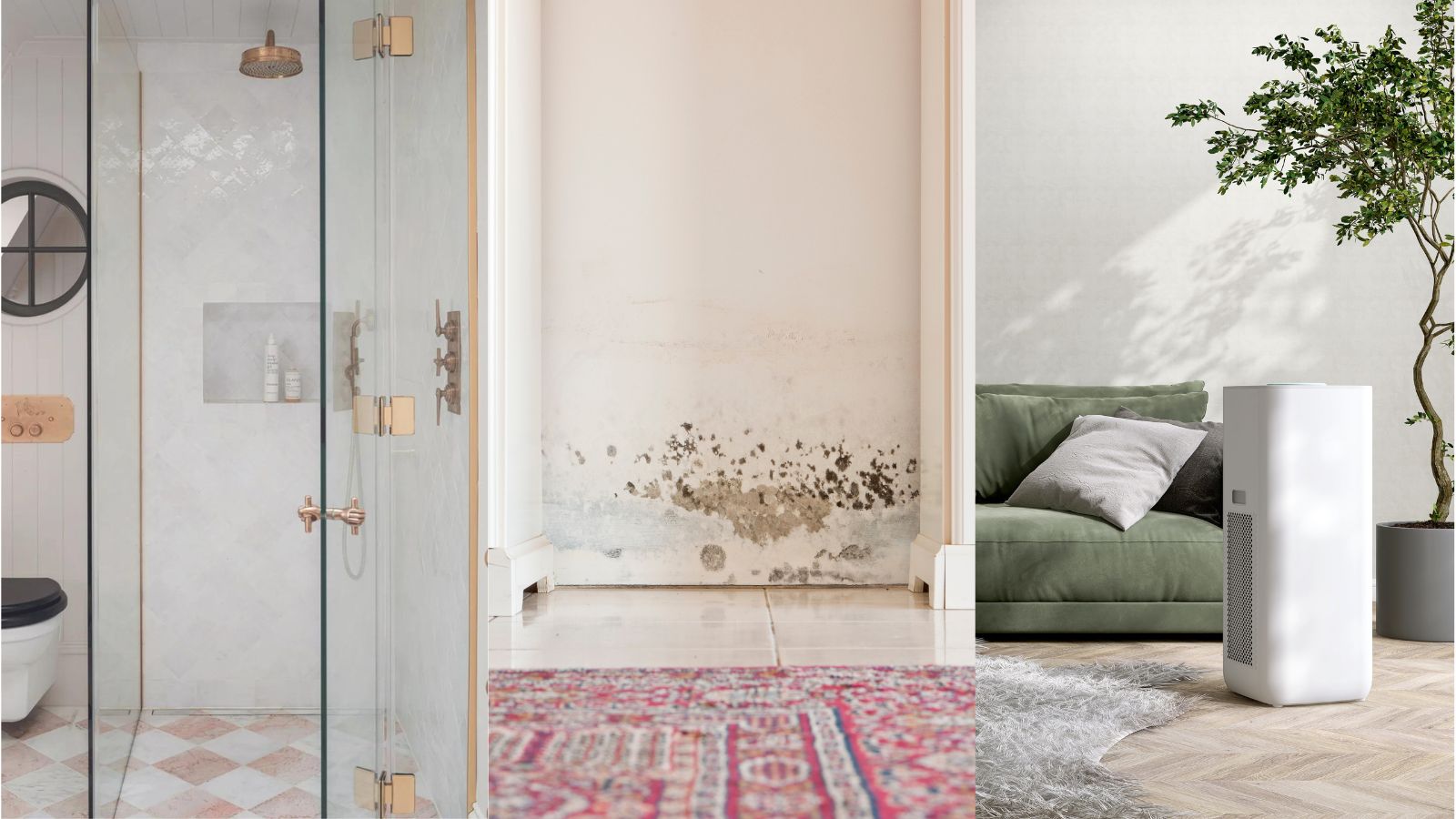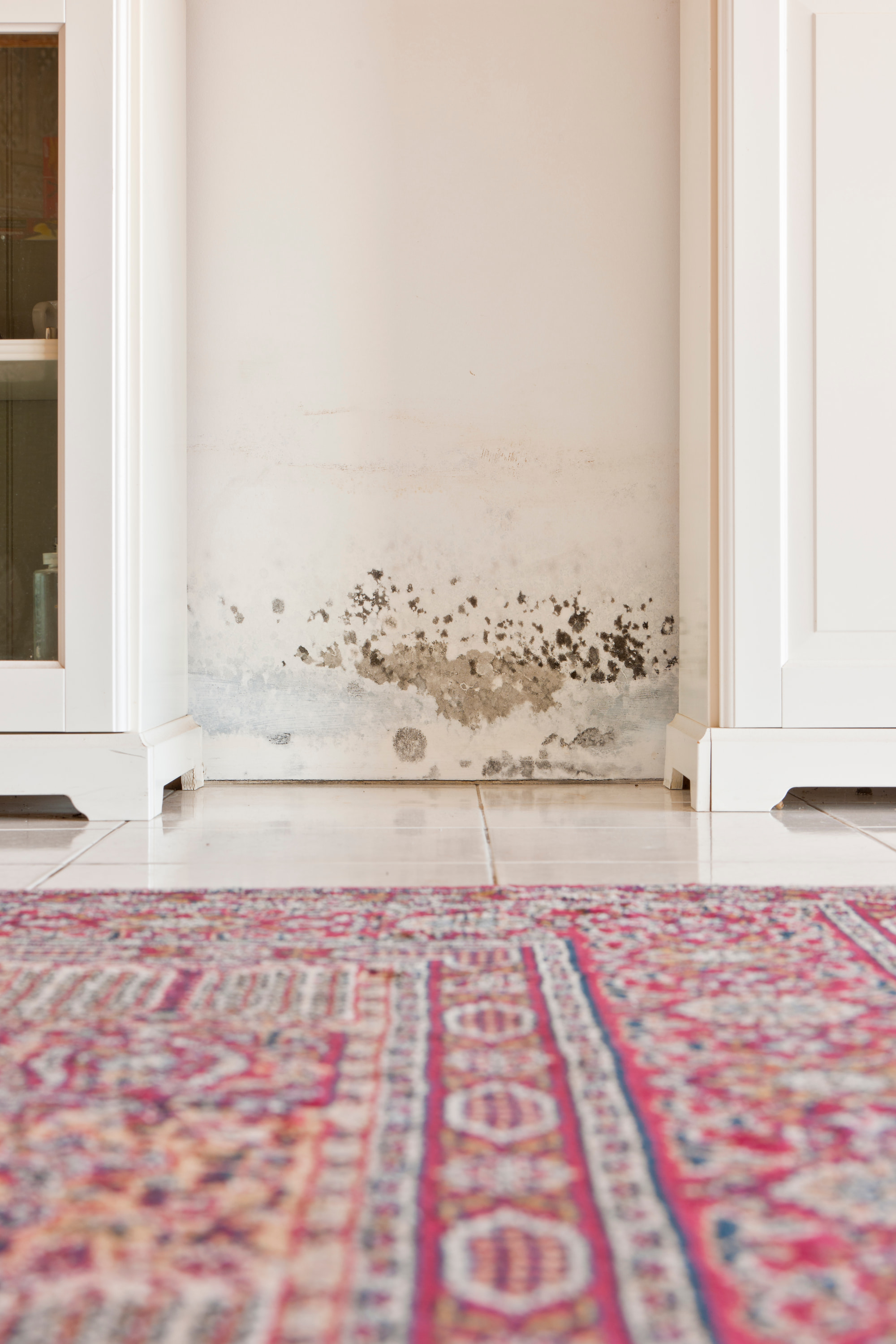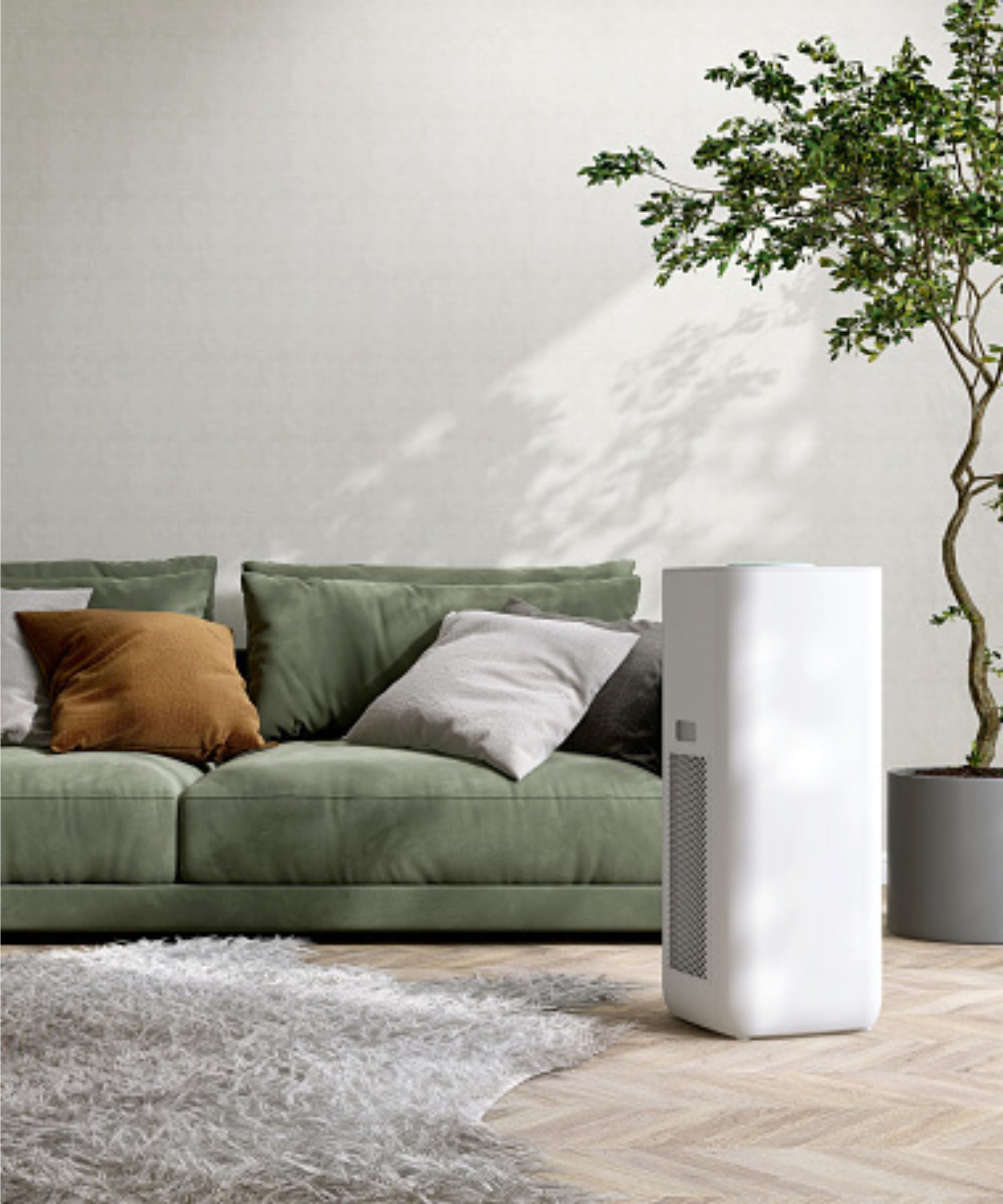
Mold is, we’re sorry to say, very common in most households. There are a whole host of different types of mold that can grow in our homes. But the good news is that it is possible to identify the most common types of household mold and, more importantly, to get rid of them.
Our homes can supply the moisture and nutrients mold needs to thrive, and while many of us can spot the signs of black bathroom mold, this isn’t the only variety you need to keep an eye out for, and mold's presence isn’t limited to the bathroom either.
To allow identification of the most frequently encountered household molds, we asked experts to explain what they look like, where in the home they’re likely to grow, and what to do when you find them, and this is what they told us.
Common types of household mold and how to get rid of them
Leaks and flooding can cause mold growth, and it’s vital to act swiftly to prevent mold after a flood. But you should also check for mold in your house to tackle the problems that can arise even without a flood and be aware that a musty smell can also be a giveaway to the presence of molds.
‘Some very common molds you may find in and around your home are Aspergillus, which has many subspecies, Penicillium, Cladosporium, and Alternaria,’ says Tony Abate, a certified mold inspector and Vice President and CTO at AtmosAir Solutions. ‘One species called Stachybotrys, known as black mold, can cause serious health issues and property damage.’
Identifying individual types of common mold can be done by their appearance, including color. Where you find them is also a clue. These are the details:
The 8 most common types of household mold

1. Alternaria
‘Alternaria is the most common form of allergenic mold in the world,’ says Michael Rubino, a mold and air quality expert, environmental wellness advocate, and Founder of HomeCleanse.
Appearance: ‘It is velvet-textured with dark green or brown hairs.’
Location: ‘It typically grows wherever dampness occurs, including showers, bathtubs, underneath leaky sinks, and around water damage.’
Risks ‘Alternaria causes asthma-like symptoms in the upper respiratory tract, nose, and mouth.’
2. Acremonium
‘Acremonium is a toxigenic mold that evolves in appearance over time,’ explains Michael Rubino.
Appearance: ‘It starts as a small, moist mold that turns into a fine, powdery substance. Acremonium is often pink, gray, orange, or white.’
Location: ‘It typically grows in household systems and areas such as condensation from humidifiers, cooling coils, drain pans, and window sealants.’
Risks: ‘Exposure to Aacremonium is very dangerous and can lead to disease. Because it is a carcinogen, it can also impair brain function.’
3. Aspergillus
‘Aspergillus is a common species found in households worldwide,’ says Michael Rubino.
Appearance ‘It has long, flask-shaped spores that can form thick layers of growth. Because over 185 species of mold under the Aspergillus umbrella exist, it can appear in many different colors, including white, yellow, brown, black, and green.’
Risks ‘Aspergillus is an allergenic mold, but it can also become more toxic depending on the species and the environmental conditions. Certain Aspergillus species are capable of producing mycotoxins, such as aflatoxins. Exposure can lead to symptoms such as asthma attacks, lung infections, and respiratory inflammation.’
4. Chaetomium
‘Chaetomium is a mold commonly found in chronically moist conditions, such as water-damaged homes and buildings,’ advises Michael Rubino.
Appearance: ‘It has a cotton-like texture, usually changing colors from white to gray to brown and eventually to black. It also commonly develops that musty odor associated with mold.’
Location: ‘You can expect them near damp or leaking roofs, basements, burst pipes, or sinks.’
Risks: ‘Exposure to Chaetomium can cause health effects such as skin and nail infections. It can also sometimes produce mycotoxins.’
5. Cladosporium
‘Cladosporium is an allergenic mold type that can grow in warm and cold conditions,’ says Michael Rubino.
Appearance: ‘Cladosporium is an olive-green or brown-colored mold with a suede-like texture.’
Location: ‘It is often found in materials such as fabrics, upholsteries, and carpets and can also develop under floorboards and inside cupboards.’
Risks: ‘Exposure to this species typically causes allergic reactions to the eyes, nose, throat, and skin. Symptoms include skin rashes and lesions, asthma, lung infections, and sinusitis.’
6. Mucor
‘Mucor is an allergenic form of mold that usually grows in thick patches,’ explains Michael Rubino.
Appearance: ‘It is often white or grayish, and proliferates quickly.’
Location: ‘It most often grows near air conditioning, HVAC systems, and ducting due to moisture from condensation.’
Risks: ‘Mucor exposure causes various health problems, particularly affecting the respiratory system, and triggers or worsens existing asthma conditions. It also causes difficulty breathing and flu-like symptoms, including fever and malaise. In very severe cases, prolonged exposure to Mucor can result in mucormycosis, a fungal infection that can damage the sinuses, lungs, and brain.’
7. Penicillium
‘Penicillium is an allergenic mold,’ says Michael Rubino.
Appearance: ‘It’s easily recognizable by its characteristic blue or green color and velvety texture.’
Location: ‘It is often found in materials such as carpets, wallpapers, ducting, and mattresses in water-damaged homes and buildings.’
Risks: ‘Exposure can cause pulmonary inflammation and asthma. Prolonged exposure can lead to chronic sinusitis.’
8. Stachybotrys
‘Stachybotrys is known as the infamous and nefarious black mold,’ explains Michael Rubino. ‘It is a toxigenic type of mold.’
Appearance: ‘It is dark greenish or black, and has a slimy texture.’
Location: ‘It thrives in damp, wet areas with high humidity levels that maintain these environmental conditions for weeks. This species is known for growing on cellulose materials such as wood, cardboard, paper, hay, or wicker.’
Risks: ‘Stachybotrys produces mycotoxins that cause severe health problems to those exposed. Symptoms include difficulty breathing, sinusitis, fatigue, and even depression. Experiences can also include burning sensations in your airways, a tightening in the chest, persistent cough, nose bleeds, fever, painful headaches, and pain in the mucus membranes/sinuses. It has also been linked to neurological problems in children and pulmonary bleeding in infants.’
How to get rid of mold

Although there are many different species of mold, getting rid of them is done in the same way, explains Michael Rubino:
- The source that led to the issue is fixed.
- Correct engineering, PPE, and remediation protocols are utilized to reduce exposure and the risk of cross-contamination in unaffected areas.
- The microbial growth is removed, including roots, dead particles, fragments, etc.
- All contamination, including mycotoxins and bacteria, is eliminated.
- The home’s interior is cleaned to eliminate any particles that were released by the microbial growth.
However, identifying the mold(s) can be helpful. ‘Knowing the type of species present is informative to understand what areas need to be remediated first (if there are multiple), as toxigenic species and molds that can produce mycotoxins should always be prioritized and addressed first,’ Michael advises.
‘Also, some molds, like Alternaria, spread quickly and must be addressed immediately. Finally, quantification is important because you want to prioritize reducing exposure to large quantities of mold over smaller amounts throughout the home.’
Bear in mind that getting rid of mold can require professional help. ‘Professionals should automatically handle anything more significant than 10 square feet,’ says Michael. ‘They should also be called in if the homeowner isn’t confident they can tick off each step above safely and accurately.’
FAQs

Can a dehumidifier get rid of mold?
‘Both air cleaners and dehumidifiers can help to curtail mold growth,’ says Tony Abate, Vice President and CTO at AtmosAir Solutions. ‘Dry environments with a relative humidity below 50% are less prone to mold growth; a dehumidifier, especially in basement areas can help. Air purification using HEPA filters can capture spores out of the air. Active technologies like bi-polar air ionization can neutralize spores in the occupied space or at their source, curtailing spread and future growth.’
Some areas of the home are hotspots for mold growth, so it pays to know how to get rid of mold in a basement and how to clean mold in the shower. Look out for the hidden moldy spots in the kitchen, too. Some items provide conditions that encourage mold growth as well, so be sure to get rid of shower curtain mold and remove mold from the rubber seal on a washing machine.







